Every day at Shoestechnologies we talk about shoes. We have seen the different components that make them up. We discovered many contexts of use and what features they require. We have found pills and curiosities for the most enthusiasts. But…
Do you know when the first footwear was born? Today we want to take you back in time, digging into our history, to find the first shoes ever created. We want to go back to the sands of time, retracing the evolution of footwear from the most ancient civilizations to the modern era.
Are you ready for this exciting journey?
History of Shoes: Prehistory
Our journey begins a long, long time ago. Long before any written findings. It is estimated, in fact, that the first shoe was born no less than 40 thousand years ago, as a simple cover from the cold and the dangers that could be encountered in contact with the ground, such as sharp stones and thorny shrubs. A protection for the feet, used occasionally by Neanderthals first and permanently by early modern humans in the Paleolithic period.
If, on the other hand, we want to talk about footwear that is more similar to our modern shoes, we have to jump several millennia. We then arrive in present-day Oregon in 7500 B.C. where sandals not unlike the Fort Rock style have been found. Or in California, where fragments of rope and sandals similar to Chevelon Canyon dating back more than 8000 years have been found.
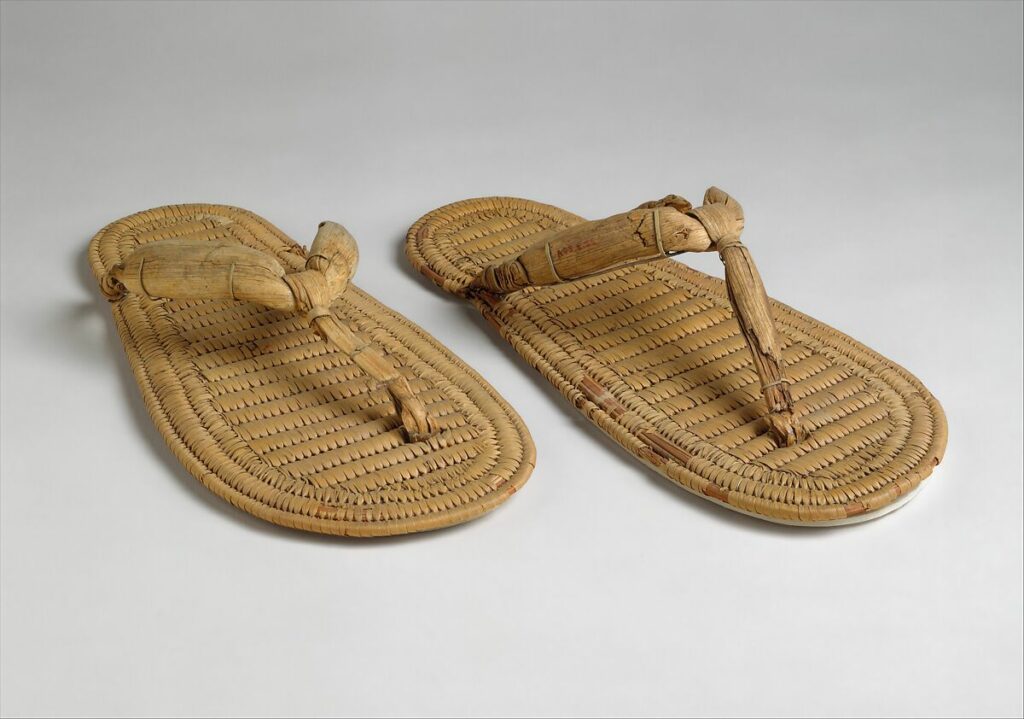
Photo credit: metmuseum
And then in Ancient Egypt, already mentioned for their in-depth knowledge of beekeeping. Such an advanced civilization, in fact, could not fail to wear special footwear: sandals made of papyrus, leather and palm leaves. These, however, could only be worn by the most important social classes, while “ordinary” people were forced to walk barefoot.
Shoes in Antiquity
If in the previous paragraph we talked about the footwear used in the first civilizations of history, with the term “Antiquity” we mostly want to talk about shoes that were built around the first millennium before the birth of Christ.
And so our journey then takes us to Ancient Greece where, around the year 1000 BC, leather shoes appeared that covered the foot up to the ankle.
They were made with materials from other lands that connected to the Greek peninsula by sea such as Cyrenaica, the Black Sea and Sicily. They already featured an ancient sole made from a complex structure of woven materials. These shoes also reflected the social position of the wearer. An example of this are the nobles of Sparta who wore shoes with brass decorations.
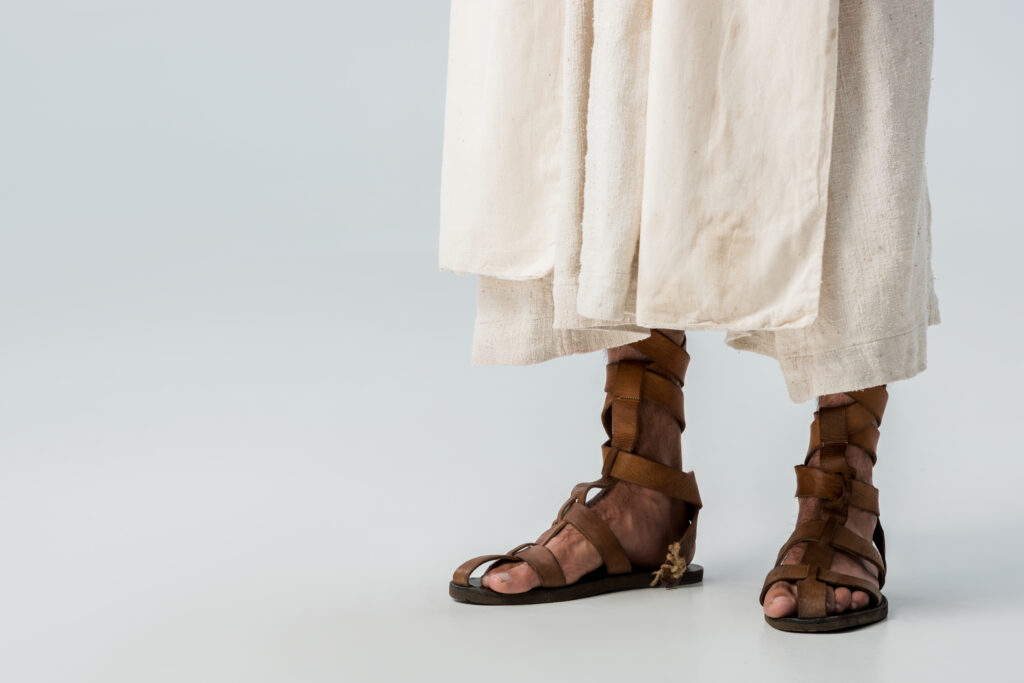
Let’s stay in the Mediterranean basin to talk about the Ancient Romans who conquered many territories throughout modern Europe. Compared to other civilizations, they have kept the particular Greek footwear, but allowed all walks of life to wear them. But not without aesthetic distinctions that would hint at the more or less affluent origins of the person. Senators, in fact, were distinguished by their black soles, while people belonging to the “lower” classes wore shoes without heels.
But the Romans also became famous for the sandals of the same name, which rode the streets of the old continent. Roman sandals, in fact, are the very first footwear in history to be designed for the foot, to which they adapt. Sole, leather strap and lacing system. Everything was designed for the comfort of the foot, without ruining its aesthetics.
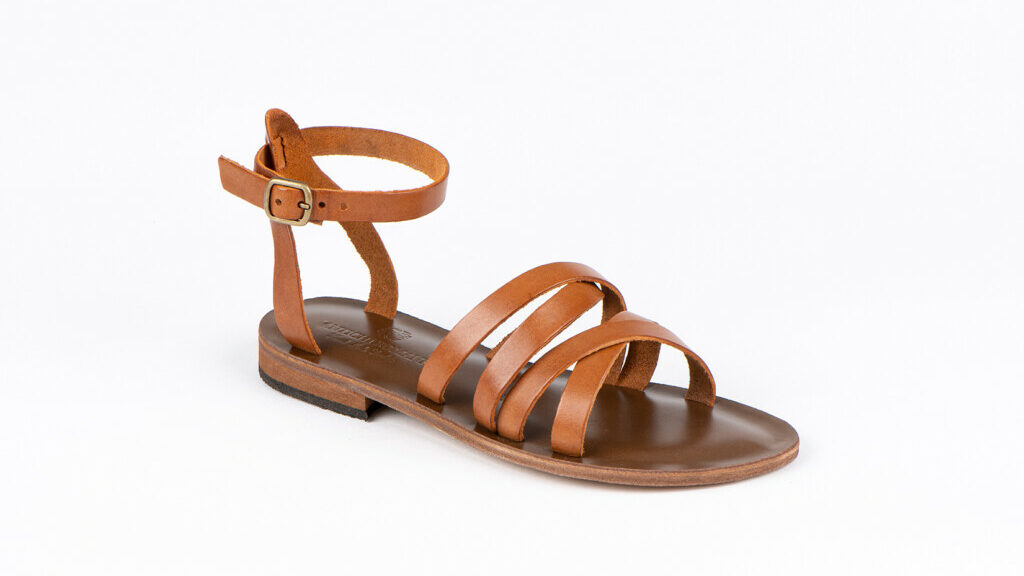
Photo credit: zausandals
Finally, we cannot fail to mention the “Paduka“, traditional high-soled Indian sandals that were mainly worn during religious ceremonies.
Shoes in the Middle Ages
Let’s take another important leap forward in time, to the Middle Ages. As you well know, it is a well-defined historical period, which begins with the fall of the Western Roman Empire (476 AD) and ends approximately with the discovery of America (1492 AD). In this period of time, the world of footwear has undergone several changes. Shoes go from being a simple practical object to an aesthetic accessory. Colour, material and sometimes even design details are becoming increasingly important so that the footwear can match the clothing.
In these years, the heel as we know it today was also introduced. But contrary to what we might think, it was an exclusive feature of men’s shoes at the time. The way of flaunting one’s social class also changes: it is now shown with pointed-toe shoe models. The longer the front end, the more important the family was. Some of the shoes found were so long and uncomfortable that they had to be fitted with ribbons to tie them around the leg, thus allowing the person to walk.
In the Middle Ages, shoes that have come down to us throughout the centuries also began to appear. Let’s talk, for example, about the Dutch clogs already known in the in-depth study of shoes in the world. A decidedly more popular and refined model than what, at that time, was also used in France during heavy work in the fields.
We also learn about pointed-toe poulaine, Polish fashion shoes that became popular until the beginning of the fifteenth century. And of the leather shoes used by the Norse to endure the cold of their homelands and the seas and rivers they used to navigate.
Not unlike the Gutul, the Mongolian winter boot that was worn by noble horse owners. But the Asia of the 1200s gave rise to a much better known fashion and to which we wanted to dedicate a separate paragraph.
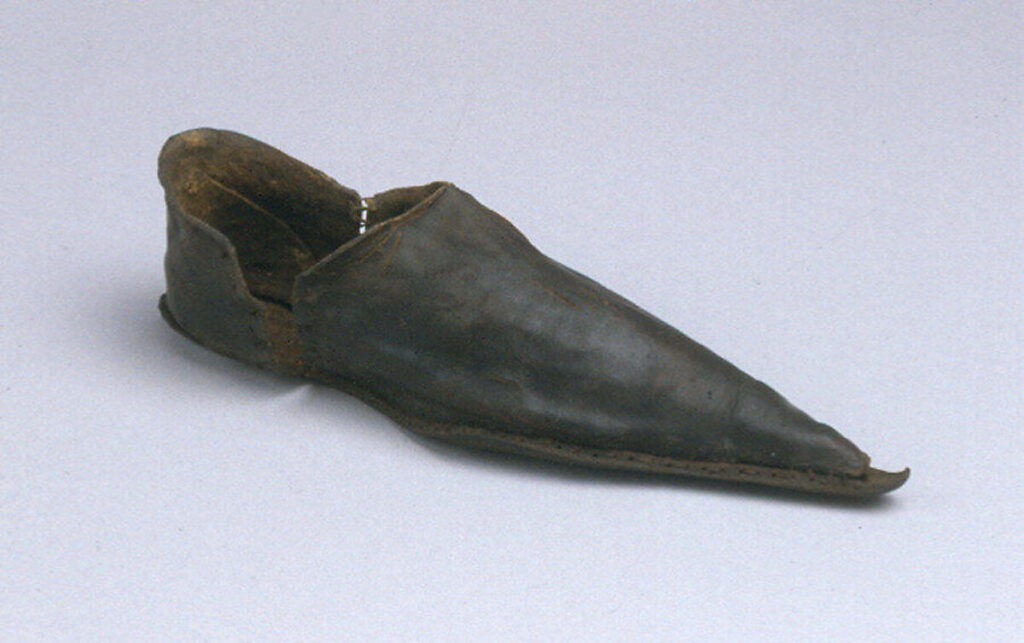
Photo credit: metmuseum
Chinese Golden Lilies
We remain in the same historical era but focusing on a country in the Far East. We move to China in the 10th-11th centuries when the “Golden Lotus” aesthetic took hold. But what is it, exactly?
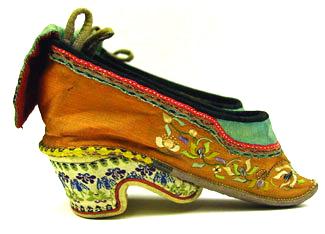
Photo credit: Museum of Anthropology, University of Missouri
This fashion is not just about shoes, but involves the whole woman’s foot. As we have already seen, in that period footwear began to have an aesthetic value, harmonizing with the beautiful Chinese silks and suggestive dresses of the oriental country. Aesthetics began to have its importance, also translating into the role of women at the time. The Golden Lotus, in fact, was born from the intention of making a bride-to-be even more graceful and desirable through its tiny feet.
A tradition that, however, hides a terrible practice. In order to reach that canon of beauty, in fact, from an early age Chinese noble girls were forced to bind their feet, applied after breaking their fingers and folding them towards the sole. The shrunken feet were then wrapped in delicate silk or cotton shoes with beautiful embroidery to create an image of perfection and gracefulness which, however, often left the woman in the condition of no longer being able to walk.
These shoes, however, have become iconic all over the globe for their history and particular shape. According to the fashion of the time, they were distinguished by their small size, between 7 and 12 centimeters, and by their particular shape. Initially built only from fabric and manufactured by the same women who would later wear them, they were called “Golden Lotus” precisely because the final shape of the foot and shoe resembled the shape of the bud of the flower of the same name.
Today we stop here with our research, but we are waiting for you for a second in-depth study that will plumb the Modern Age of footwear, up to the present day.
Did you know all these curiosities? Or do you have others related to the historical periods mentioned?
You may also be interested in the following articles:

Who is Amina Muaddi? Let’s discover together her iconic shoes
The universe of Amina Muaddi’s footwear, from fairytale-designed shoes to the extraordinary collaboration with Rihanna. A journey through success and creativity.

The amazing World to Bee: We put on the Beekeeper’s Shoes
Enter this wonderful world. Walk among the beehives with all the tools of the trade, from protective overalls to beekeeping boots.

A shoe for each country: footwear from around the world
It takes all sorts to make a world. This variety is expressed through the different cultures of the world, which are also characterised by their shoes.











































